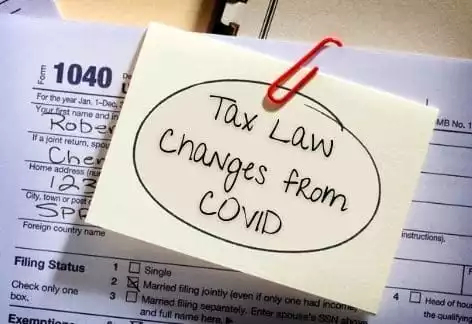Navigating employer payroll taxes has become more confusing and difficult as we manage the COVID-19 crisis across America. Here’s what you should know about payroll taxes during this time of uncertainty.
As part of the White House’s response to COVID’s economic impact, the President signed an executive order earlier in August giving employers the option to defer their employees’ halves of the payroll tax, effective September 1, 2020, through to the end of the year (December 31, 2020). The U.S. Treasury recently released a memorandum on the executive order providing further guidance.
Employer payroll taxes refer to the 12.4 percent of an employee’s gross pay that goes to Social Security (up to an annual total threshold of $137,700 for 2020) and the 2.9 percent that goes to Medicare (no threshold).
These taxes are covered in part by the employer, and in part by the employee’s own wages, in a 50/50 split.
Employer Payroll Taxes and COVID-19
Employers were already given the option to defer their half of the Social Security tax (6.2 percent) back when the CARES Act was first signed into law, from March 27, 2020 to December 31, 2020. To do so, employers would simply report these deferred taxes in their quarterly federal tax report to the IRS (Form 941) and withhold the payment.
Any Social Security taxes deferred this year would then be due incrementally over two years. This means half of the deferred taxes would be due on December 31, 2021, and the other half would be due on December 31, 2022.
With the recently signed executive order, President Trump is now giving businesses the opportunity to let their employees defer their portion of the tax as well, provided their gross pay totals $4000 every two weeks, or less ($104,000 a year). Any employee making more than that is exempt from the tax deferral.
Those that do choose to defer their taxes will be able to collect an additional 6.2 percent and 1.45 percent of their gross pay in cash for the rest of the year. However, they too must pay their deferred taxes back, albeit by a much stricter deadline.
A Deferral, Not Forgiveness
The most important thing to realize here is that, regardless of whether employers do or don’t offer this to their employees, it’s ultimately a loan rather than a tax credit or a form of stimulus. While it can help employees who earn less than $4000 every two weeks get a little extra cash to walk around with, it’s up to each employee individually to determine whether they need the extra cash now at the expense of withheld wages in 2021.
The deadline for paying back any employer payroll taxes deferred from an employee’s share of the tax throughout 2020 will be April 30, 2021. Employees who choose to have their portion of the tax deferred throughout the rest of the year will have a portion of their pay next year withheld to pay back those taxes. This can put a dent in an employee’s finances in the first quarter of 2021.
However, for many families, the extra cash can help cover critical expenses as this crisis continues to rage on.
For others, this could be considered a fairly small six-month interest-free loan with steep penalties from the IRS should you find yourself unable to pay back your deferred taxes by April 2021.
What the Executive Order Means for Employers
For employers, there’s no additional benefit, and a potential disincentive. One of the issues with the Treasury’s memorandum was that it didn’t offer any particular guidelines to help explain what would happen if an employee parted ways with their company before the April 2021 deadline, after deferring taxes throughout the rest of the year.
The language currently featured in the memorandum heavily implies (and perhaps even establishes) that employers are ultimately on the hook for covering those deferred taxes and must “make arrangements” to withhold and pay the total deferred taxes from the ex-employee’s last paycheck or out of their own checkbook, should an employee leave before covering their total deferred tax liability.
What the Order Means for Self-Employed
For the self-employed, the President’s new executive order has no real bearing on their taxes or financial situation. The CARES Act already gave self-employed individuals the right to defer 50 percent of their Social Security tax starting March 27, 2020 until December 31, 2020. To take advantage of this deferral of the other 50 percent, a self-employed individual would have to set up a company and put themselves on a payroll, which may or may not be more trouble than it’s ultimately worth.
Talking with Employees About Withheld Wages Next Year
If you have already deferred your half of employer payroll taxes this year and are planning on offering your employees the chance to defer their portion as well, it’s important to make sure your employees understand what that might mean for their wages in the spring.
The 6.2 percent deferred taxes can be a serious boon to someone struggling to get by under the current conditions. The extra cash now may be worth more than a slight cut in wages earlier next year, given things might be looking up by then.
For employers, there are a few issues here to keep in mind.
-
-
- First, if an employee decides to defer their taxes then leaves, it’s currently understood that the employer is still on the hook for that portion of the taxes, as well as any incurred penalties if the payments are not made in full before April 30, 2021.
- Second, it is not clear whether employers must comply if an employee wishes to have their half of the payroll taxes deferred.
-
When Must Deferred Taxes Be Paid Back?
To reiterate, the employer’s share of the deferred payroll tax is due in two parts, the deadline for the first half being December 31, 2021, with the deadline for the second half being December 31, 2022. Employer payroll taxes can be deferred from March 27, 2020 to December 31, 2020.
Any employee’s deferred payroll taxes must be paid back in full by April 30, 2021. Employees can opt to have their share of the payroll tax deferred from September 1, 2020 to December 31, 2020. For someone making $3,500 every two weeks, this will put roughly an extra $217 in their pockets on every biweekly paycheck.
However, that also means employers must effectively double their employee’s share of the payroll tax every month in 2021, until the end of April. And for seasonal workers only working through to December, that might mean a hefty cut in their last paycheck to cover their deferred taxes for the new year.
It’s critical that employers discuss this with their employees, while remaining aware that the company will likely be asked to foot the bill should the employee leave. This can be an additional burden on top of the first half of the employer’s deferred taxes from March to December.
Final Thought
With all the changes and confusion surrounding employer payroll taxes this year, and possibly years to come, it is a good idea to speak to a tax attorney for advice. They can assist you with managing your IRS payroll tax and help you choose the right course of action.

